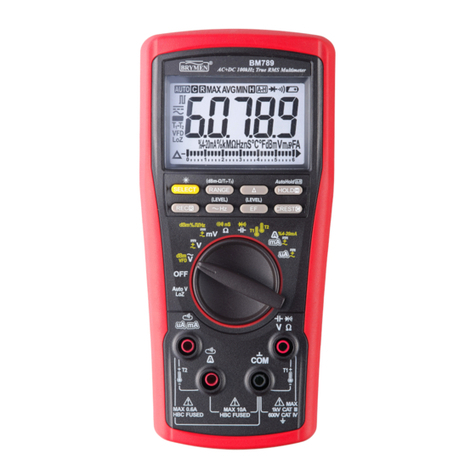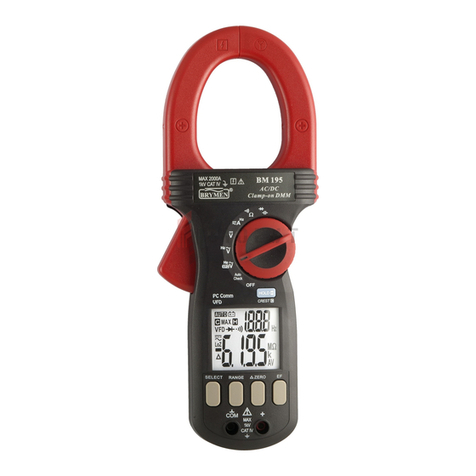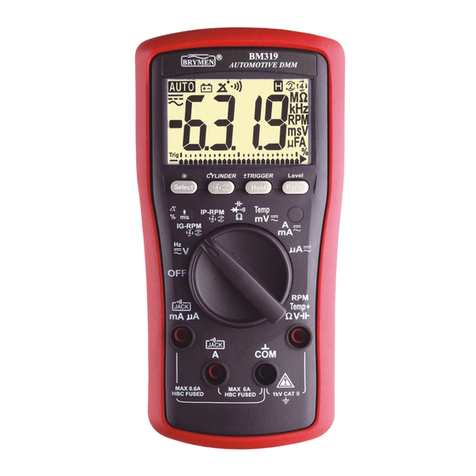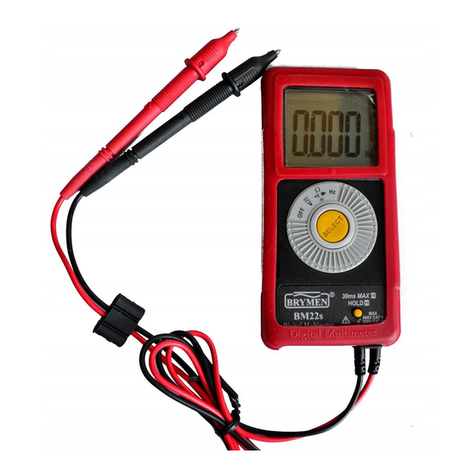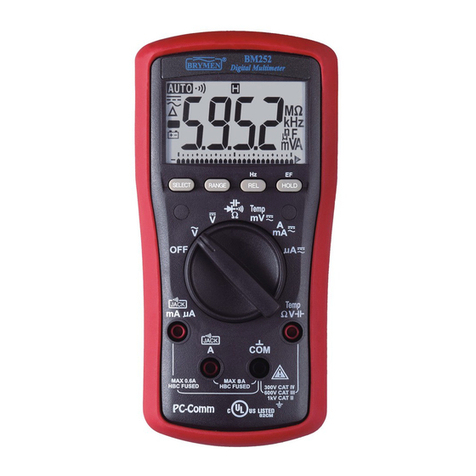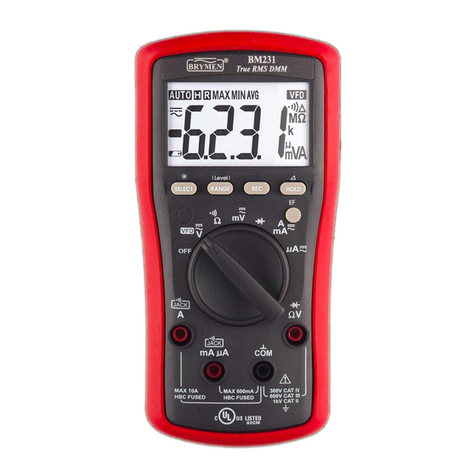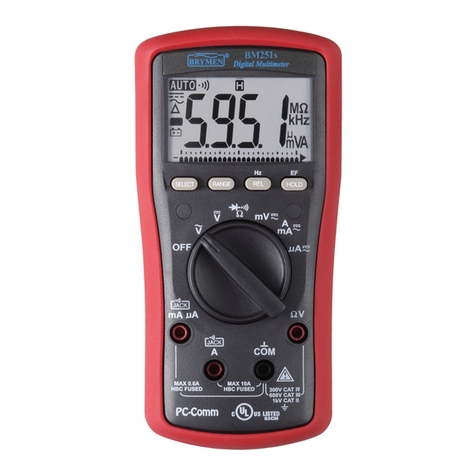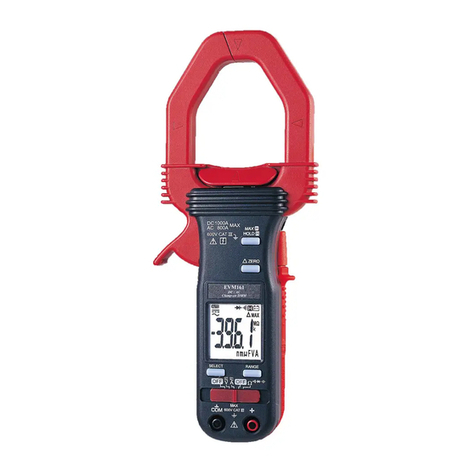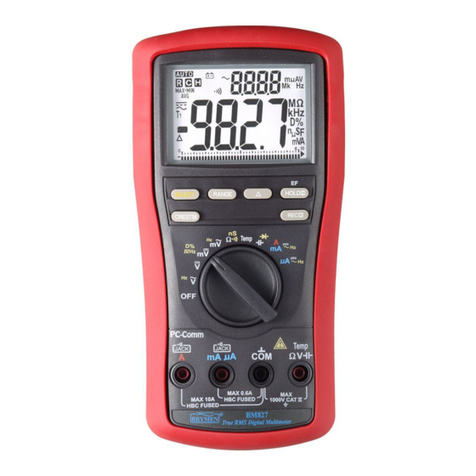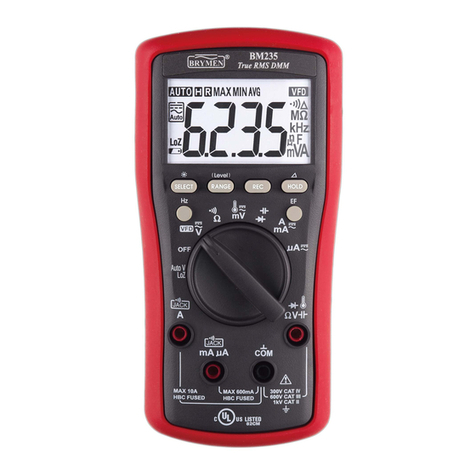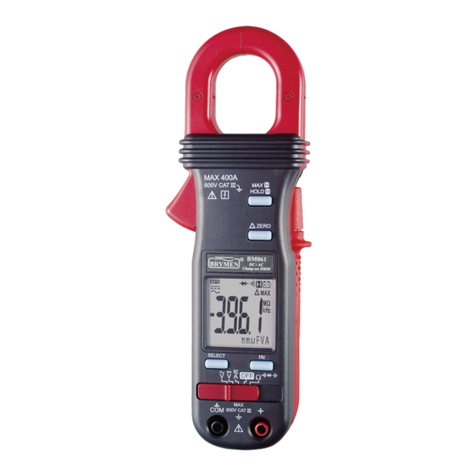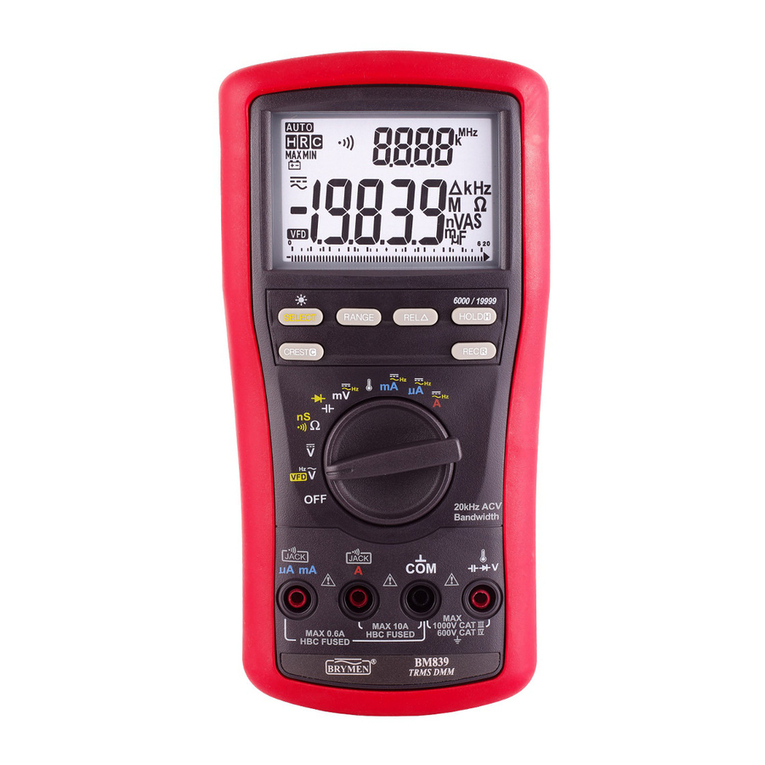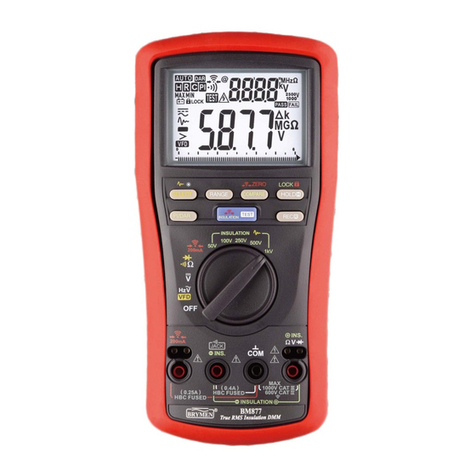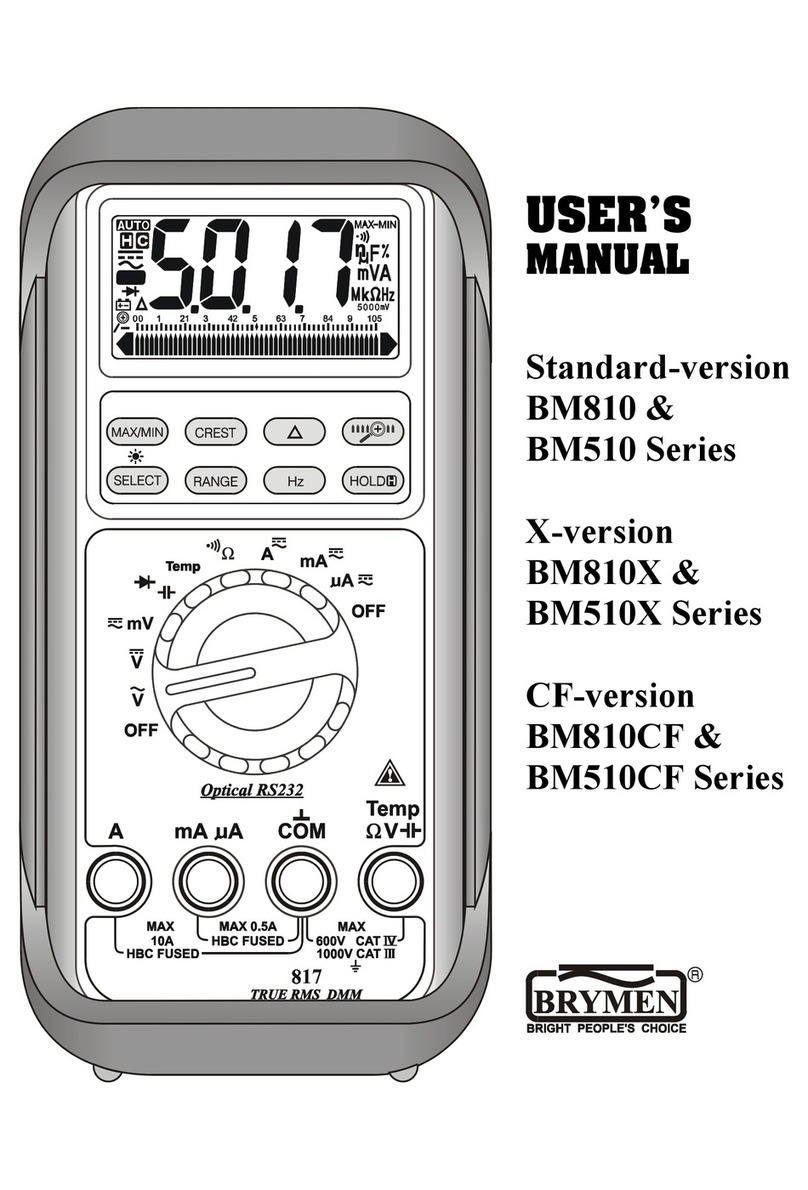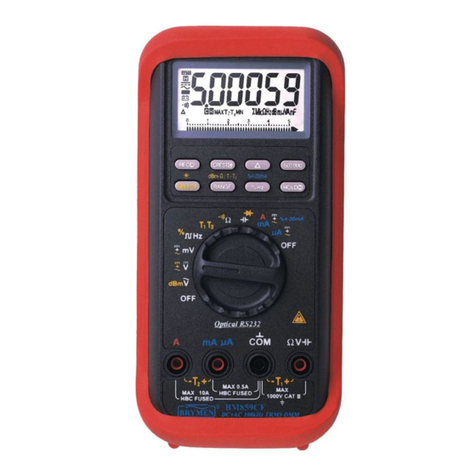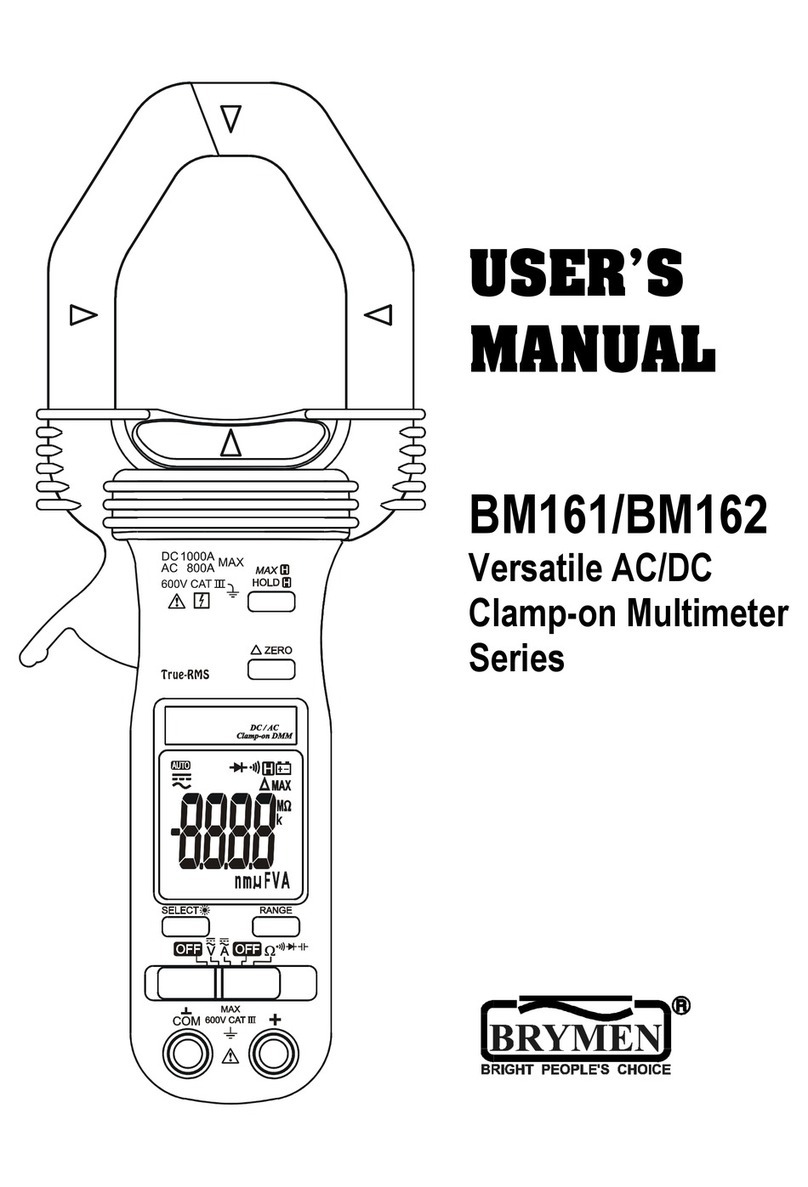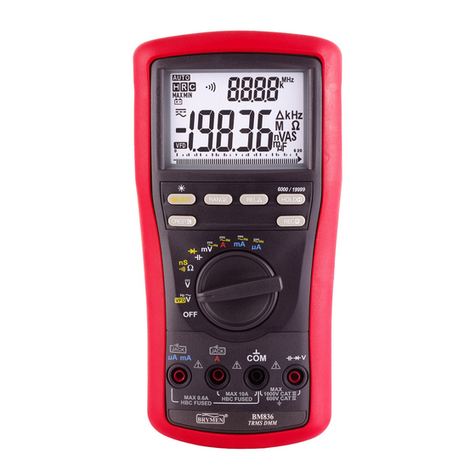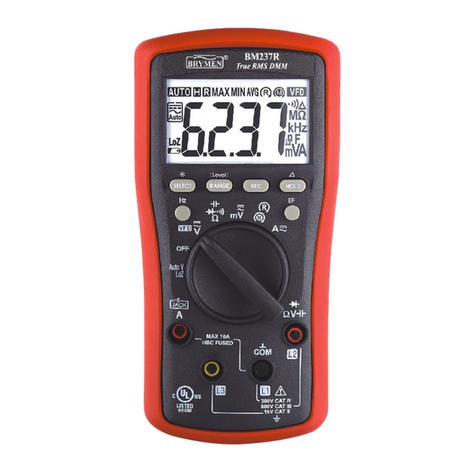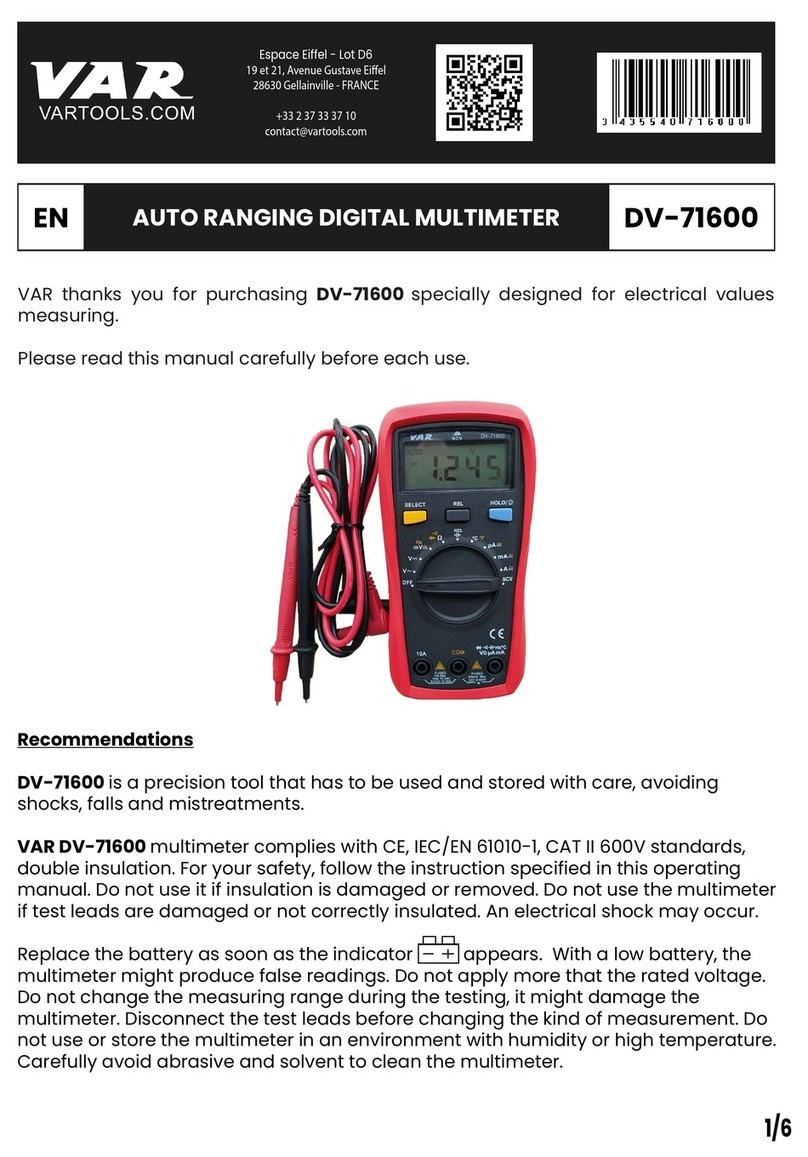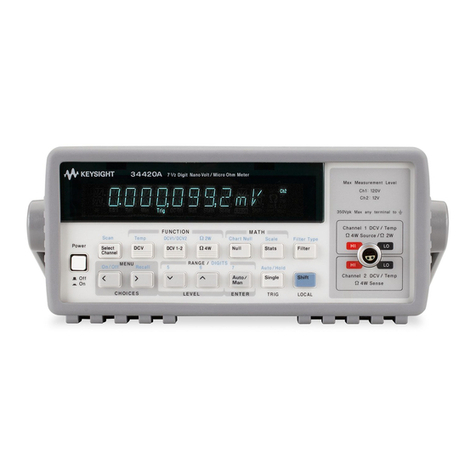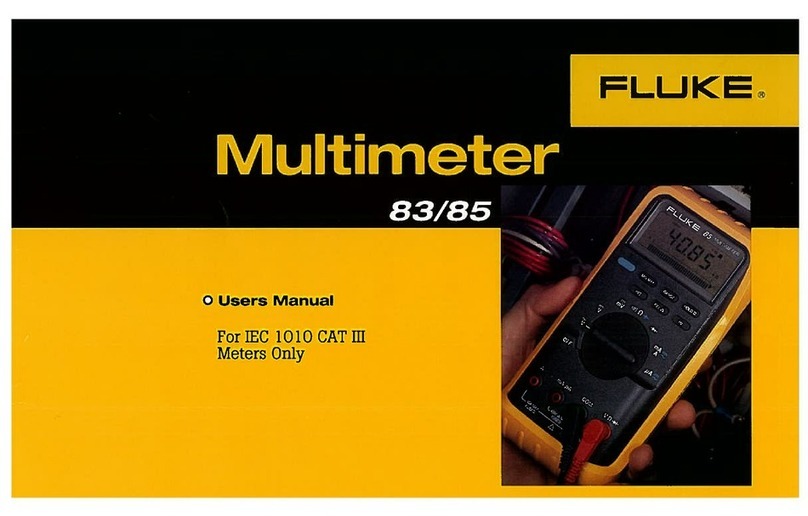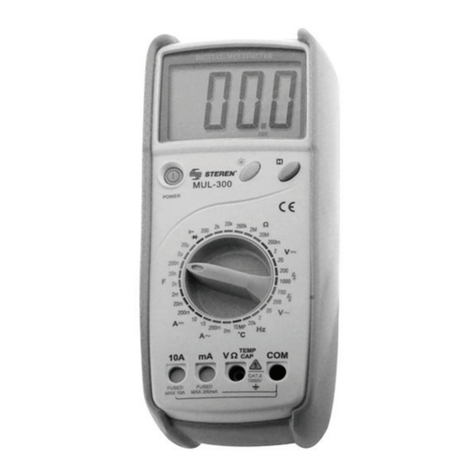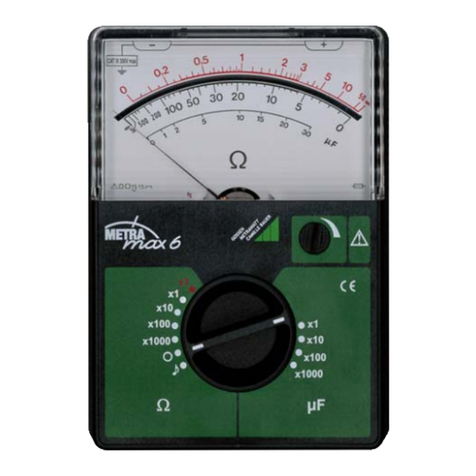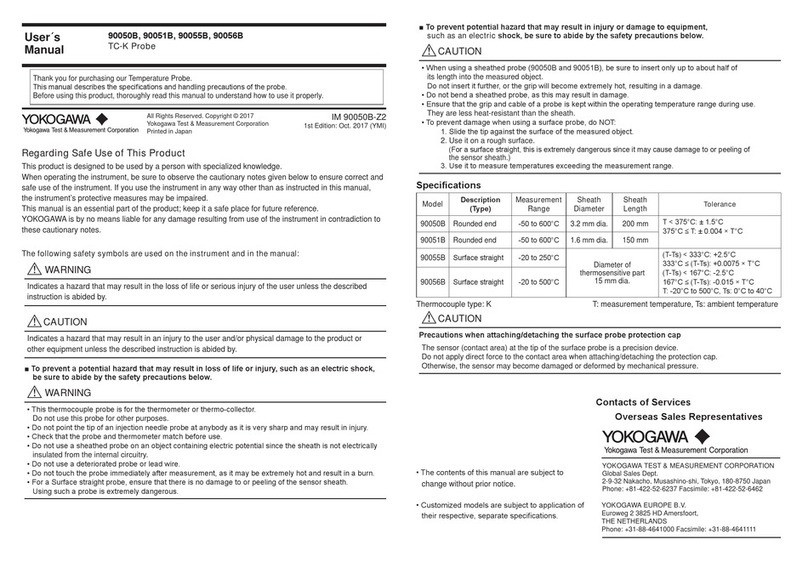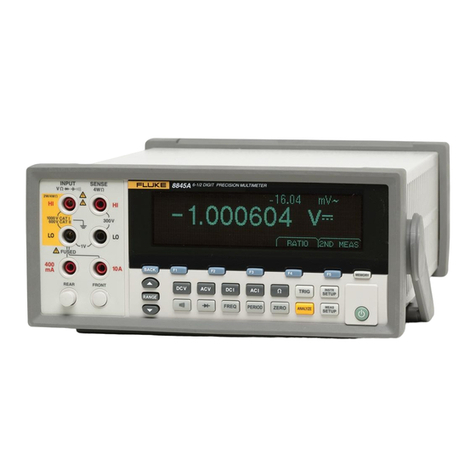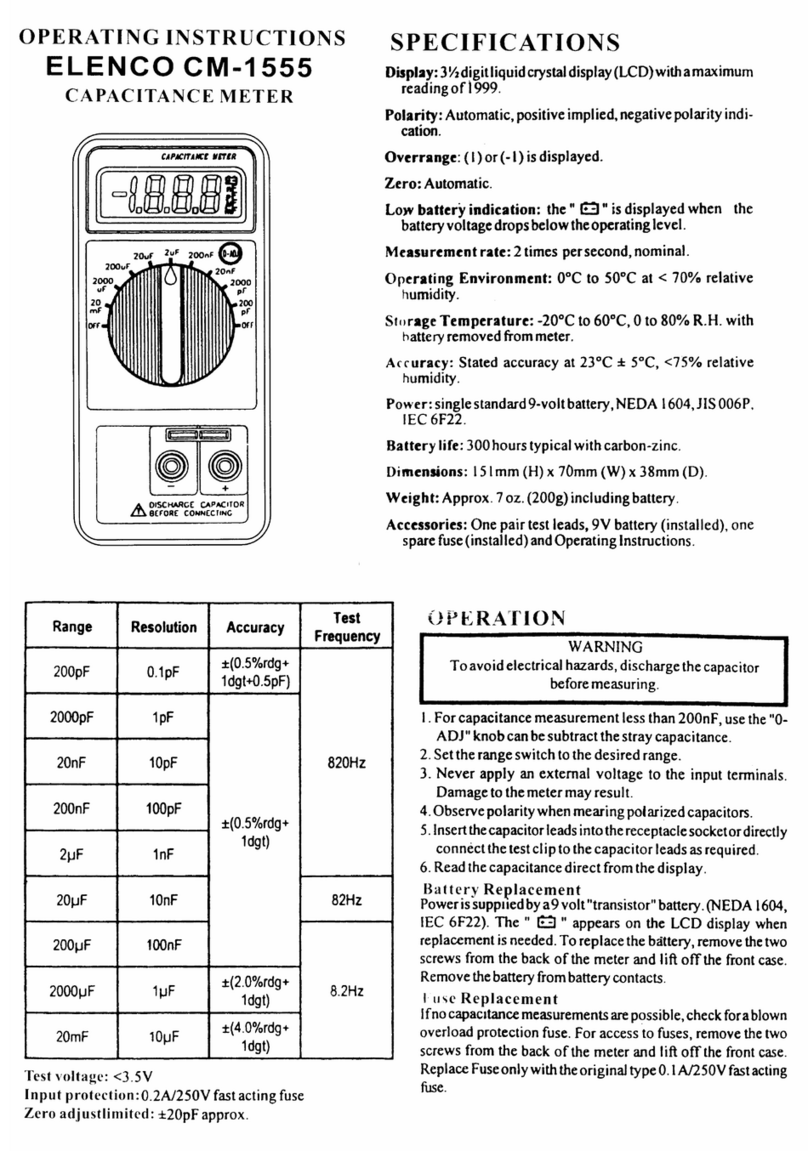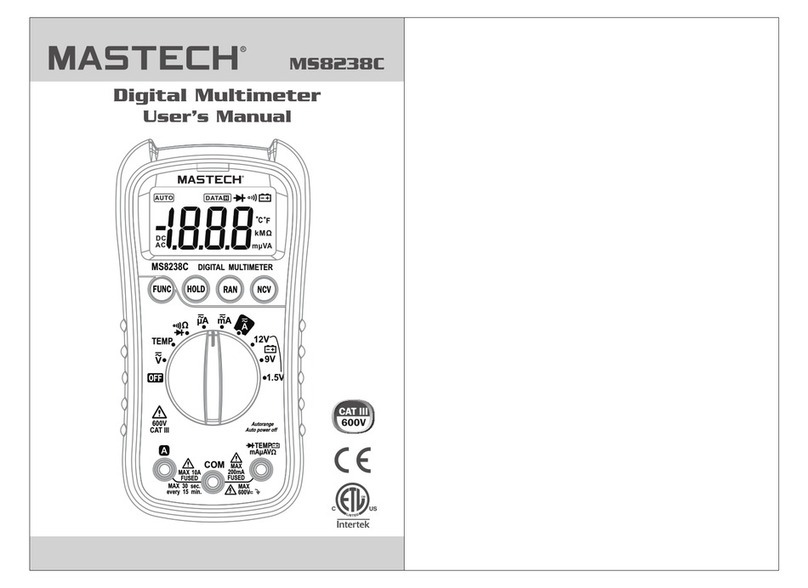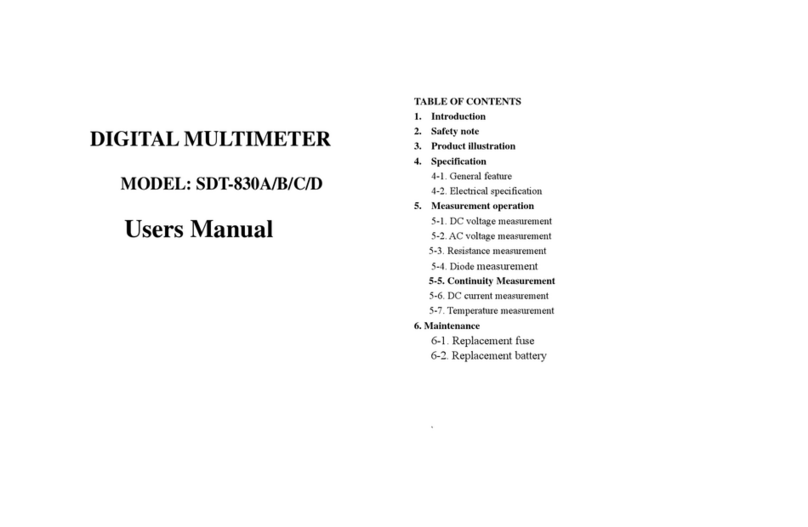
1
0) BRIEF INTRODUCTION
This 2800 CSE meter series is a safety Category and EMI Shielding Enhanced (CSE)
version of our popular 800 practical meter series. Apart from the added up-to-date
features and improvements in safety ratings, it is also equipped with EMI shielding on
both sides of the circuitry module to improve measurement stability under harsh
electromagnetic interferences, especially in the electrical and automotive industries.
1) SAFETY
This manual contains information and warnings that must be followed for operating the
meter safely and maintaining the meter in a safe operating condition. If the meter is
used in a manner not specified by the manufacturer, the protection provided by the
meter may be impaired.
Observe proper safety precautions when working with voltages above 30 Vrms, 42.4
Vpeak, or 60 VDC. These voltage levels pose a potential shock hazard to the user.
Disconnect the test leads from the test points before changing functions. Do not
expose this product to rain or moisture. The meter is intended only for indoor use.
Keep your hands/fingers behind the hand/finger barriers (of the meter and the test
probe assembly, where applicable) that indicate the limits of safe access of the hand-
held parts during measurements. Inspect lead wires, connectors, and probes for
damaged insulation or exposed metal periodically. If any defects are found, replace
them immediately. Only use the test probe assembly provided with the meter or a UL
Listed test probe assembly to the same meter ratings or better. Optional offer premium
test probe assembly using silicone lead wire insulation, at agent’s discretion, is
equipped with white inner insulation layers as wear indicators. Replace them
immediately if any of the white layers has become visible.
The meter meets IEC/EN/BSEN/CSA_C22.2_No./UL standards of 61010-1 Ed. 3.1 and
61010-2-033 Ed. 2.0 to Measurement Categories CAT III 1000V and CAT IV 600V. The
accompanied test probe assembly meets IEC/EN/BSEN/CSA_C22.2_No./UL
standards of 61010-031 Ed. 2.0 to the same meter ratings or better. The 61010-031
requires exposed conductive test probe tips to be ≤ 4mm for CAT III & CAT IV (≤
19mm for CAT II) ratings. The accompanied add-on caps (or permanent insulated tips
option) have to be used for applications under CAT III & CAT IV. Refer to the category
markings on your probe assemblies as well as on the add-on accessories (like
detachable Caps or Alligator Clips), if any, for applicable rating changes.
